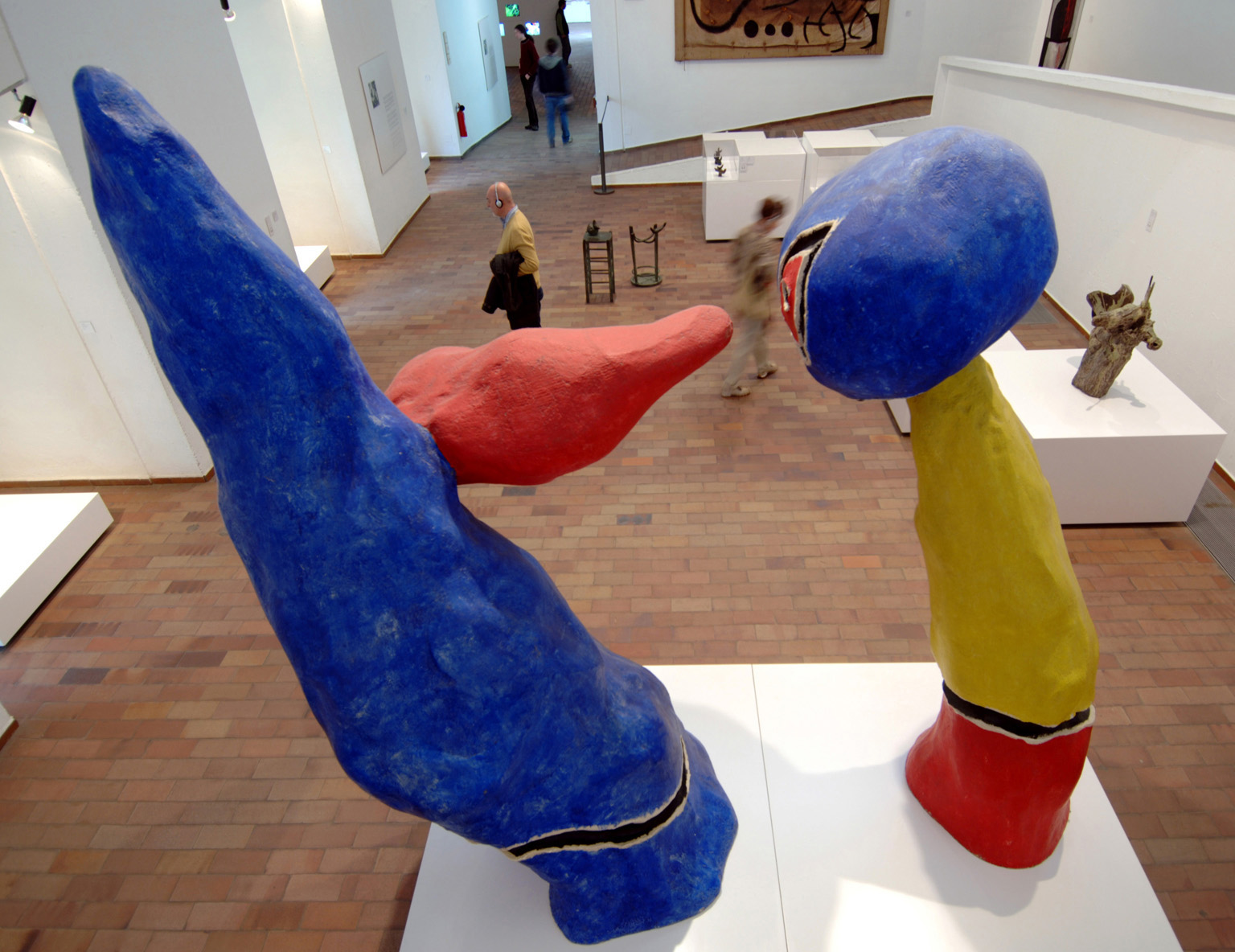
FUNDACIÓ JOAN MIRÓ
Founded in 1975 by Joan Miró himself, who wanted it to be a contemporary arts center, this is now a superb tribute to a man whose legacy as an artist and a Catalan is visible across the city. The museum holds more than 14,000 of Miró’s paintings, sketches, and sculptures, tracing his evolution from an innovative Surrealist in the 1920s to one of the world’s most challenging modern artists in the 1960s.

The façade of Fundació Joan Miró
NEED TO KNOW
![]() Av Miramar, Parc de Montjuïc • 93 443 94 70 • www.fmirobcn.org • Open 10am–6pm Tue–Sat (to 8pm Apr–Oct), to 9pm Thu, 8pm Sat, 3pm Sun • Adm $13.50, concessions $8; Espai 13 $3; multimedia guide $5.50; temporary exhibitions $8
Av Miramar, Parc de Montjuïc • 93 443 94 70 • www.fmirobcn.org • Open 10am–6pm Tue–Sat (to 8pm Apr–Oct), to 9pm Thu, 8pm Sat, 3pm Sun • Adm $13.50, concessions $8; Espai 13 $3; multimedia guide $5.50; temporary exhibitions $8
- The restaurant-café has a garden terrace with indoor and outdoor seating and is one of the area's best dining options.
- In summer, live experimental music is showcased in the auditorium, usually on Thursday nights (but check beforehand).
- The gift shop has an original range of Miróesque curiosities, from tablecloths to champagne glasses.
Gallery K. AG
This extension houses 25 paintings on long-term loan from the private collections of members of the Miró family and from Gallery K, founded by Japanese collector Kazumasa Katsuta.
1. Tapis de la Fundació
This immense, richly colored tapestry represents the culmination of Miró’s work with textiles, which began during the 1970s. The work framed the characteristic color palette of Miró's output.

2. Pages Catala al Car de Lluna
The figurative painting Catalan Peasant by Moonlight dates from the late 1960s and highlights two of Miró’s favourite themes: the earth and the night. The figure of the peasant, a very simple collage of color, is barely decipherable, as the crescent moon merges with his sickle and the night sky takes on the rich green tones of the earth.

3. L’Estel Matinal
This is one of 23 paintings known as the Constellation Series. The Morning Star’s introspective quality reflects Miró’s state of mind at the outbreak of World War II, when he was hiding in Normandy. Spindly shapes of birds, women, heavenly bodies, lines, and planes of color are suspended in an undefined space.
4. Home i Dona Davant un Munt d’Excrement
Tortured and misshapen semiabstract figures try to embrace against a black sky. Miró’s pessimism at the time of Man and Woman in Front of a Pile of Excrement would soon be confirmed by the outbreak of the Civil War.
5. Font de Mercuri
Alexander Calder donated the Mercury Fountain to the Fundació as a mark of his friendship with Miró. The work was an anti-fascist tribute, conceived in memory of the attack on the town of Almadén.
6. Espai 13
This space showcases the experimental work of new artists from around the world. The exhibitions, based on a single theme each year, are usually radical and often use new technologies.
7. Sèrie Barcelona
The Fundació holds the only complete set of prints of this series of 50 black-and-white lithographs. This important collection is only occasionally on display.
8. Visiting Exhibitions
Over the years, a number of temporary exhibitions, which are usually held in the Fundació’s west wing, have included retrospectives of high-profile artists such as Mark Rothko, Andy Warhol, René Magritte, and Fernand Léger.
9. Terrace Garden
More of Miró’s sculptures are randomly scattered on a spacious terrace, from which you can appreciate the Rationalist architecture of Josep Lluís Sert’s geometric building. The 10-ft (3-m) tall Caress of a Bird (1967) dominates the terrace.

10. Sculpture Room
This room focuses on Miró’s sculptures from the 1940s to the 1950s, when he experimented with ceramic; bronze; and, later, painted media and found objects. Notable works include Sun Bird and Moon Bird (both 1946–9).

